
“ہم ایک اہم ہدف تک پہنچ چکے ہیں, لیکن ہم یہاں نہیں روک سکتے. ہمارا اگلا قدم تک پہنچنے کے لئے سب سے زیادہ مشکل ہدف بنانے کے لئے ہونا ضروری ہے, دنیا بھر میں سب سے غریب اور سب سے زیادہ پسماندہ لوگ. The United Nations General Assembly has recognized drinking water and sanitation as human rights. That means we must ensure every person has access.” — Ban Ki-moon, United Nations Secretary-General.
World Water Day on March 22 is a day on which all global citizens should focus their attention on the importance of fresh water to sustainable development. Earlier this month the UNICEF/WHO Joint Monitoring Report, Progress on Drinking Water and Sanitation 2012, announced the world had met its MDG (Millennium Development Goal) target of halving the proportion of people without access to safe drinking water. Despite this achievement, ensuring every child’s right to water, صحت و صفائی, and hygiene education remains a major challenge for policy makers, school administrators and communities in many countries. What are the major challenges and obstacles that must be overcome? Which are the communities most at risk? What education programs are currently in place and what progress is being made? What can each of us as global citizens in classrooms around the world that have safe drinking water and sanitation do to help classrooms that do not? I had the pleasure of discussing this among other things with Susan Durston, Associate Director, Education Programmes and Global Chief of Education for UNICEF.
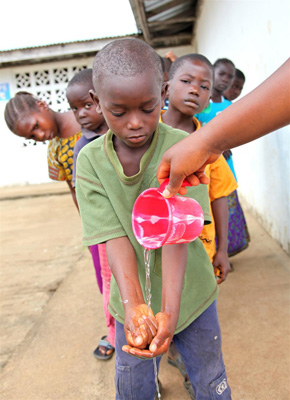
Which communities of the world remain the main targets for safe drinking water today?
کے 36 countries that are not on track to meet the MDG global water target, two-thirds are in Sub-Saharan Africa. There are many pockets in other regions as well that are lagging behind. UNICEF and its partners are strengthening efforts to help these countries successfully meet drinking water goals by 2015 or shortly thereafter.
UNICEF is deeply concerned for hundreds of thousands of children without access to improved water sources. And in some countries that have made good progress, the poorest people have hardly benefitted. Attention must focus on the poorest people to ensure they gain access to these services, اور عدم مساوات ان لوگوں کو پیچھے چھوڑ دیا جا رہا ہے تک پہنچنے کے لئے نشانہ بنایا مداخلت کے ذریعے خطاب کرنا لازمی ہے.
خطوں کے درمیان تفاوت, ممالک, دیہی اور شہری علاقوں, خواتین اور لڑکیوں کو, اور گھر کی آمدنی آج توجہ کی ضرورت ہے کہ اہم معاملات میں سے کچھ کو ظاہر.
تعلیمی کیا پروگرام بچوں کو ان کے مخصوص علاقوں میں پانی کی صورت حال کو سمجھتے ہیں اور وہ اس کے بارے کیا کر سکتے ہیں میں مدد کے لئے اسکولوں میں جگہ میں یونیسیف ڈال دیا ہے?
یونیسیف, سکولوں میں اس کا پانی اور حفظان صحت سے متعلق پروگراموں کے ذریعے (دھونا), works towards making schools healthier and more attractive to children. صحت مند بچوں کو زیادہ مؤثر متعلمین ہیں, and girls who spend less time fetching water have more time for school.
UNICEF and partners are funding WASH in Schools activities in 94 ممالک, including initiatives in some of the most difficult situations for children.
The Essential Health Care Program (EHCP), implemented by the Philippines’ تعلیم کے سیکشن, is an outstanding example of large-scale action to promote children’s health and education.
Three group activities – washing hands daily with soap, brushing teeth daily with fluoride toothpaste, and deworming twice a year – are the core of this nationwide program. The purpose is to lower rates of diarrhea, respiratory infections, worm infections and severe tooth decay. The program has scaled up rapidly, currently reaching about 2 ملین بچے.
It has also generated strong evidence to indicate that after just one year, rates of oral infection, malnutrition and worm infections were significantly reduced among children in participating schools.
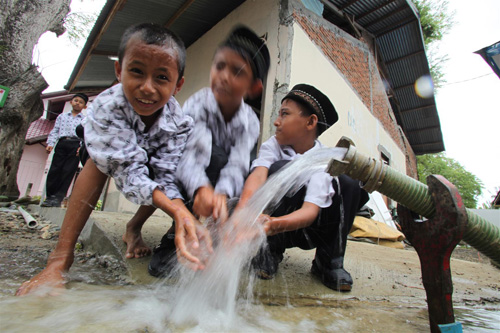
What obstacles does UNICEF face in providing an education where needed most?
Access to water and sanitation affects children’s right to education in many ways, and lack of these facilities in schools can have a detrimental effect on children. It can lead to intestinal worms which research shows, saps a child’s learning ability, affects their food intake, and can lead to diarrheal diseases that may cause children to lose school days. جوہر میں, this impacts their learning, leading to children not being able to catch up classes, and can eventually lead to children dropping out of school all together. This is particularly true for girls, who with no water or private toilets may miss 25% of classes every month.
The biggest challenge in children’s education today is inequity in access to school and the quality of education. دوسری چیزوں کے درمیان, education can break the intergenerational cycle of poverty and deprivation, create opportunities for further education, and promote gender equality.
مثال کے طور پر, more than half the world’s primary age out-of-school children live in 15 ممالک. In Nigeria: A poor, rural Hausa girl completes only 0.3 years of education; a wealthier or urban boy completes 10.3 سال.
UNICEF’s Education Program is working towards sharpening the focus on the “ایکوئٹی” in education through multiple strategies and initiatives, by paying particular attention to excluded and marginalized children. At the global level, they include tools for planning such as bottleneck analysis, the Out-of-School Children Initiative, and advocates for Child Friendly Schools that address social norms including sanitation practices. Research on social norms and teachers provides data for better planning. اسی طرح, education programs across countries and regions are working to address specific issues as they get played out within the regional, national and sub-national contexts to further promote and support equity. Education colleagues work with social protection and other sectors to address the barriers children face in access to good quality education.
What are the main challenges you are facing in relation to WASH in Schools in these communities?
The lack of quality data on WASH in Schools coverage is a significant barrier to identifying children’s needs, establishing and carrying out effective programs, and monitoring progress. Because many countries have not defined their minimum standards for WASH in Schools, and the monitoring systems do not reflect WASH in Schools as an indicator, the quality of data on coverage and access remains questionable. It is common, مثال کے طور پر, that a national monitoring system thinks it’s adequate to report that a school with 300 بچوں, which has just one latrine hole, has sufficient access to sanitation.
Lack of clear guidelines and policies is yet another challenge and can have an added disadvantage on children with disabilities. Unhygienic sanitation affects all children, and disabled children even more. An analysis of surveys from 14 developing countries finds that children with disabilities, عمر 6-17, are much less likely to have enrolled in school or be in school than their peers. Research shows, accessible WASH facilities are key to their attendance in school. Conflicts — both natural and man-made — can sometimes go as far as to undo WASH practices so carefully taught and instituted in schools. Sustainability and maintenance of facilities is another challenge. Many schools do not have funds to buy soap and keep it at hand washing stands and also repair and maintain toilets and water supply facilities.
Schools are often the focal points for a community’s water supply. UNICEF has supported and continues to support programs that focus on water and sanitation in the school, thereby strengthening the role of the community and access to safe water for the whole community as well.
لہذا, renewed commitments are needed to 1) set minimum standards for WASH in Schools by adopting standards based on UNICEF-World Health Organization guidelines, اور 2) to monitor WASH in Schools coverage through education management information systems (EMIS) and support the compilation of data on coverage and practices at the global level.
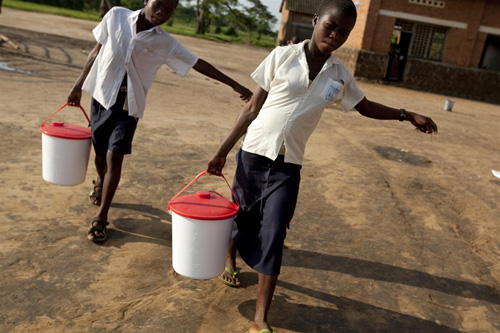
While volunteering in Tanzania I noticed that women and girls were responsible for domestic water supply and sanitation. What is being done to elevate the position of women so that they may support the development of their communities better?
UNICEF especially believes in girls’ تعلیم (بنیادی, secondary and tertiary). Educating girls is not only the right thing to do but it is an investment in our collective future. Communities and governments are also recognizing this. Girls equipped with a quality education are more empowered and better prepared to protect themselves against violence and exploitation and are also less vulnerable to disease, including HIV and AIDS.
When water is not available on premises, including domestic use, women and girls are much more likely to be the main water carriers for families. This is a great concern because it takes up time when they should be in school or enjoying their childhood.
Bringing water sources closer to home will cut the time spent in water collection and help cleanliness in the home.
A WASH in Schools evaluation in Kenya indicates that girls were absent less in schools where there was more hand washing and very high toilet use. In Bangladesh and India, innovative projects demonstrate that menstrual hygiene can be incorporated into broader WASH in Schools interventions. Training and information for peer groups of children and female teachers show how women and girls can be empowered through improved menstrual hygiene management.
Starting today and every day going forward, what can classrooms around the world that have safe drinking water do to help the classrooms around the world that do not?
Engage with WASH in Schools programs, by contributing to the bigger picture and bringing individual or small-scale projects into cooperative initiatives that reach more schools, more effectively.
Schools can buddy with each other in advocating and sharing knowledge about healthy water and sanitary practices. باری میں, children can carry this message to the wider community. Schools or classrooms can also raise funds to help students without water and hygiene sources to also have access to these basic facilities.
We have proof of the impact of WASH in Schools and we all have a role to play to ensure its success. Every child deserves to be in a school that provides safe water, صحت و صفائی, and hygiene education. سب کے بعد, it is their right.
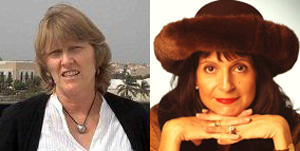
All photos courtesy of UNICEF.
تعلیم کے لئے عالمی تلاش میں, سر مائیکل باربر سمیت میرے ساتھ اور عالمی سطح پر معروف فکری رہنماؤں (برطانیہ), ڈاکٹر. مائیکل بلاک (امریکہ), ڈاکٹر. لیون Botstein (امریکہ), ڈاکٹر. لنڈا ڈارلنگ-ہیمنڈ (امریکہ), ڈاکٹر. مادھو چوہان (بھارت), پروفیسر مائیکل Fullan (کینیڈا), پروفیسر ہاورڈ گارڈنر (امریکہ), پروفیسر کریں Yvonne ہلمین (نیدرلینڈ), پروفیسر کرسٹن Helstad (ناروے), جین Hendrickson نے (امریکہ), پروفیسر گلاب Hipkins (نیوزی لینڈ), پروفیسر Cornelia Hoogland (کینیڈا), مسز. چینٹل کوفمین (بیلجیم), ڈاکٹر. Eija Kauppinen (فن لینڈ), پروفیسر ڈومینک Lafontaine (بیلجیم), پروفیسر ہیو Lauder (برطانیہ), پروفیسر بین لیون (کینیڈا), پروفیسر بیری McGaw (آسٹریلیا), شیو ندار (بھارت), پروفیسر R. نٹراجن (بھارت), ڈاکٹر. ڈینس پوپ (امریکہ), شریدر رازگوپالن (بھارت), ڈاکٹر. ڈیانے Ravitch (امریکہ), سر کین رابنسن (برطانیہ), پروفیسر Pasi Sahlberg (فن لینڈ), Andreas کی Schleicher (پیسا, او ای سی ڈی), ڈاکٹر. انتھونی Seldon نے (برطانیہ), ڈاکٹر. ڈیوڈ Shaffer کے (امریکہ), ڈاکٹر. کرسٹن عمیق کر رہے ہیں (ناروے), چانسلر اسٹیفن Spahn (امریکہ), ایوز Theze (اسکول Français کی امریکی), پروفیسر چارلس Ungerleider (کینیڈا), پروفیسر ٹونی ویگنر (امریکہ), سر ڈیوڈ واٹسن (برطانیہ), پروفیسر Dylan کے Wiliam (برطانیہ), ڈاکٹر. مارک Wormald (برطانیہ), پروفیسر تیو Wubbels (نیدرلینڈ), پروفیسر مائیکل نوجوان (برطانیہ), اور پروفیسر Minxuan جانگ (چین) وہ تمام اقوام کو آج سامنا ہے کہ بڑی تصویر تعلیم سوالات دریافت کے طور پر. تعلیم کمیونٹی پیج کے لئے گلوبل تلاش
C. M. روبن وہ ایک موصول ہوئی ہے جس کے لئے دو بڑے پیمانے پر پڑھا سیریز کے مصنف ہے 2011 میں Upton سنکلیئر ایوارڈ, “تعلیم کے لئے گلوبل تلاش” اور “کس طرح پڑھیں گے?” انہوں نے تین bestselling کتابوں کے مصنف ہیں, سمیت Wonderland میں یلس اصلی.


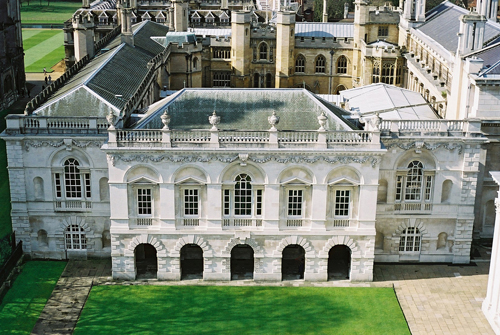
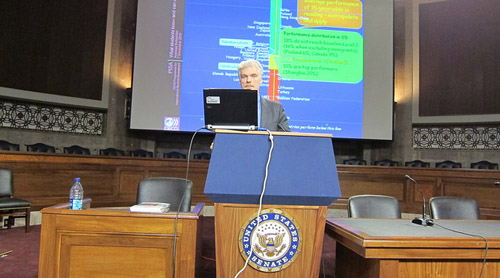
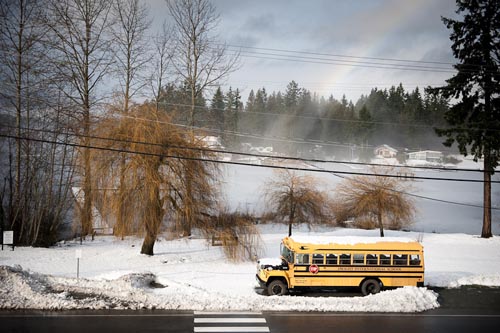
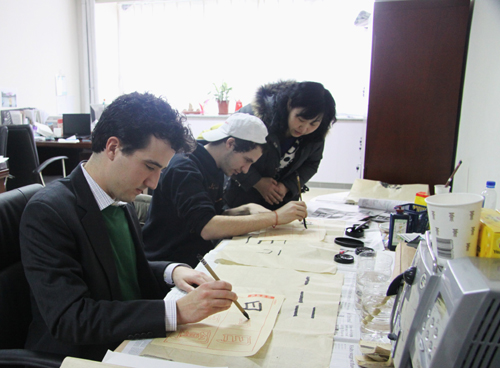
حالیہ تبصرے